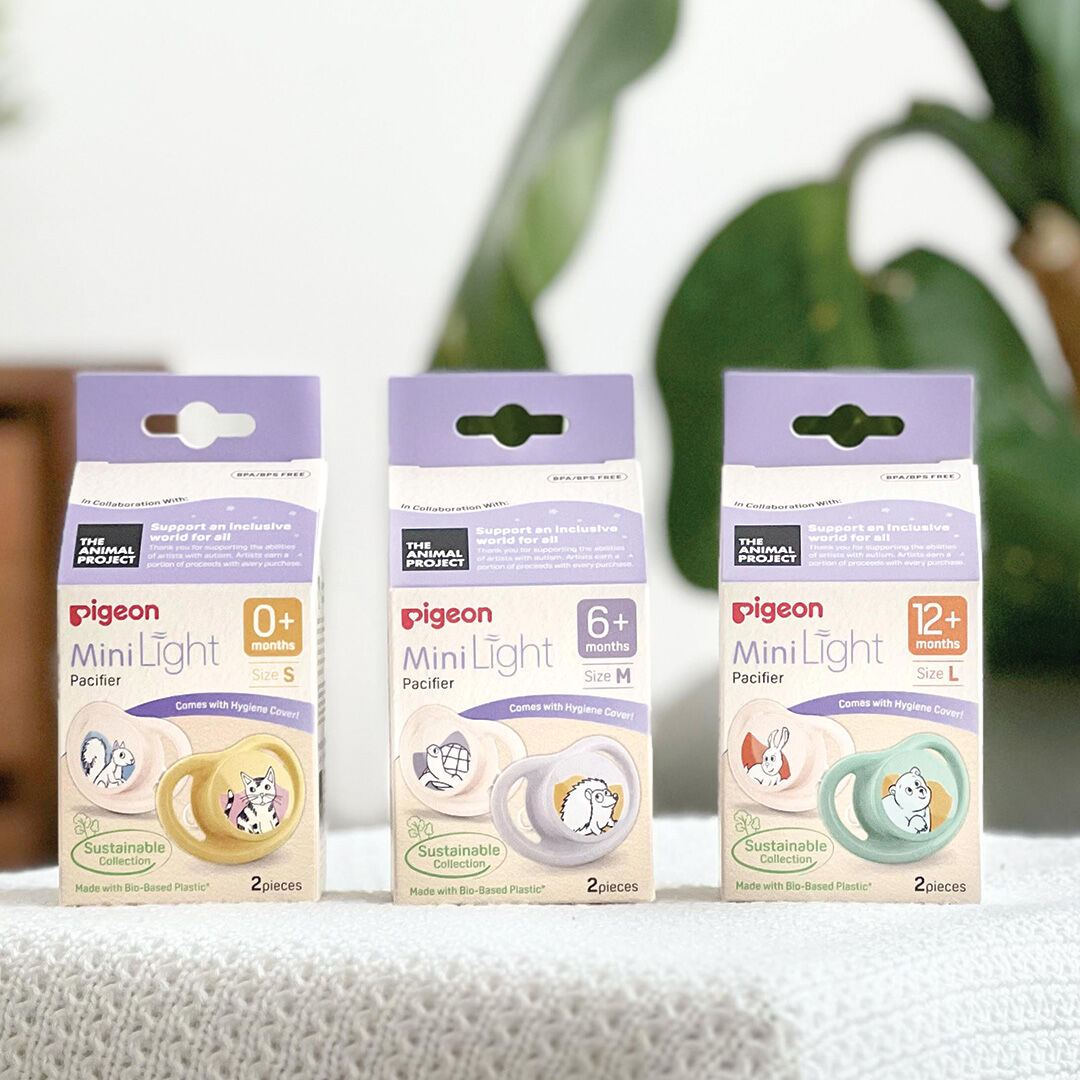Recent Articles
-
Is Your Baby’s Cup Helping or Hindering Their Oral Development?
Learn from Speech & Feeding Therapist Dr Lisa Lim how straw drinking supports your baby’s oral development, and why the Pigeon StarTouch™ Cup makes the difference. -
MiniLight Pacifiers Made with Purpose Initiative
Discover the Pigeon MiniLight Pacifier, ultra-light, baby-safe, and designed with purpose through The Animal Project collaboration for comfort and inclusion. -
SofTouch vs. Step-Up: Which Pigeon Bottle Fits Your Baby’s Stage?
Discover the difference between Pigeon SofTouch™ and Step-Up™ bottles — two feeding systems designed to support your baby from first latch to independent sipping.
Wide Neck vs. Standard Neck Baby Bottles

Choosing the right baby bottle can be a daunting task for new parents. With so many options available, it can be difficult to know which one is best for your baby. One of the most important factors to consider is the neck size of the bottle. Pigeon offers two main types of bottles: wide-neck and standard-neck. In this blog post, we'll discuss the key differences between these two options and help you decide which one is the best fit for your baby. As another handy resource, we have a previous blog on 5 tips to help you choose your baby's first bottle.
Wide-Neck Bottles (Pigeon SofTouch™)
Pigeon Wide-Neck baby bottles have a wider opening at the top, similar to the shape of a mother's breast. Pigeon SofTouch™ bottles and teats are known for having a wider opening at the top, similar to the shape of a mother's breast. This makes them feel more natural for babies who are used to breastfeeding. These bottles are often recommended for:
- Combination feeding: When a baby is both breastfed and bottle-fed.
- Weaning: When a baby is transitioning from breastfeeding to bottle-feeding.
- Reluctant babies: If your baby hesitates to take a bottle, the wide neck might help them feel more comfortable.

Pros:
- Natural feel for breastfeeding transition: A wide-neck bottle's neck more closely resembles the shape of a mother's breast, making it easier for babies to transition from breastfeeding to bottle-feeding.
- Easier to clean and fill: The wide opening makes cleaning and filling the bottle simpler, reducing the risk of contamination.
- Compatible with a broader range of nipples: Wide-neck bottles are compatible with a wider range of nipples, including those designed for slow, medium, and fast flows.
- Peristaltic teat: The SofTouch™ bottles come with a peristaltic teat, miming the natural flow of breast milk.
- Available in various materials: SofTouch™ bottles are available in PP, PPSU, glass, and T-Ester.
- Available in six different sizes: The teats come in six different sizes, from newborn to toddler.
- Effective air ventilation system: helps prevent colic, making them ideal for babies who are both breastfed and bottle-fed.
We received a glowing review from Sarah P, who shared:
“My exclusively breastfed baby (5 months old) needed to take a bottle for the times I was working, but she just wouldn’t—she would chew it and spit out milk and fuss. We tried four or more other bottles and had resorted to syringe feeding when this bottle arrived. She took it straight away—such a relief! The teat is really thick and soft. I highly recommend it!”
Cons:
- May not fit all bottle warmers or sterilisers: Some bottle warmers and sterilisers may not accommodate wide-neck bottles.

Standard / Thin Neck Bottles (Pigeon Flexible™)
Pigeon Flexible thin-neck baby bottles and teats have a traditional, slim-neck baby bottle design that is narrower at the top of the opening. Flexible™ bottles come in five different materials and various sizes to fit your bottle-feeding needs:
They are a good choice for:
- Bottle-fed babies: If your baby is not breastfed.
- Tiny babies: If your baby is particularly small.
- Fussy babies: If your baby sometimes gets upset with the teat.

Pros:
- More portable: Thin-neck bottles are typically smaller and lighter than wide-neck bottles, making them easier to carry around.
- More compatible with bottle accessories: Standard neck bottles are more likely to fit in bottle warmers, sterilisers, and other accessories.
- Easier for babies to hold: Some babies may find it easier to hold a standard neck bottle, as it is narrower and easier to grip.
- Available in various materials: Flexible™ bottles are available in PP, CRYSTAL PP, PPSU, glass, and T-Ester.
- Available in four different sizes: We offer four different teat sizes, from newborn to toddler, so you can always find the perfect teat for your baby’s age and needs.
- Effective air ventilation system: helps prevent colic, making them ideal for babies who are both breastfed and bottle-fed.
One of our happy customers, Giulianna, wrote about her slim neck bottle:
“My boy was a 26-weeker currently 36 weeks gestation & finally taking bottles. Pigeon are the only bottles that fit well in his little mouth, and he enjoys them.”
Cons:
- It may be more challenging for breastfeeding transition: The narrower neck of a standard neck bottle can make it more difficult for babies to transition from breastfeeding to bottle-feeding. In this case, we would recommend a wide neck baby bottle.
Choosing the Right Bottle for Your Baby
The best type of bottle for your baby will depend on your individual needs and preferences. Here are some factors to consider:
- Baby's age and preferences: A smaller newborn bottle size is recommended for newborns. Consider your baby's preferences and any feeding challenges they may be experiencing.
By carefully considering these factors, you can choose the best type of bottle for your baby and ensure their healthy feeding and development. If you're still unsure about which type of bottle to choose, it's always a good idea to consult with your paediatrician for personalised advice.





